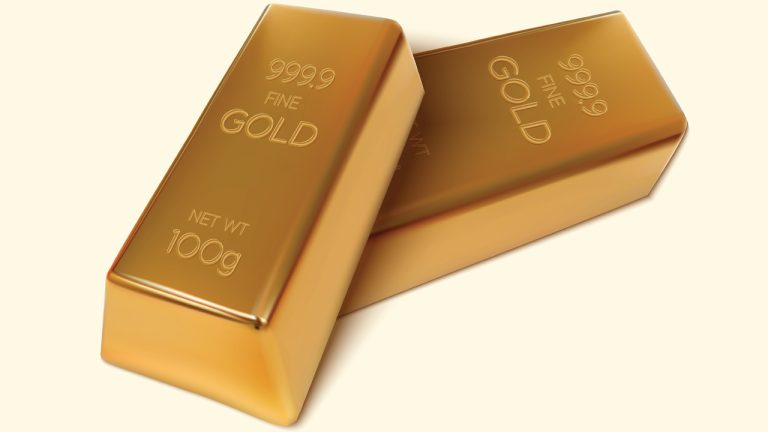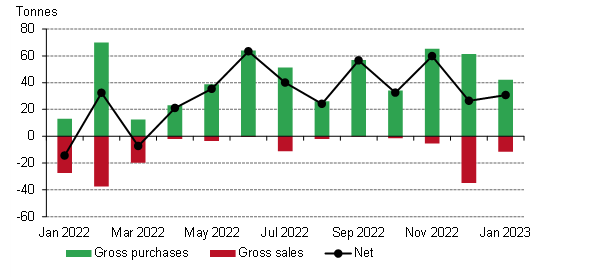Central Banks Continue to Show Strong Demand for Gold in 2023, Says World Gold Council Report

Central banks show continued demand for gold in 2023, as per a recent report from the World Gold Council (WGC), which noted that the world’s central banks accumulated 31 tons of the precious metal in January. Turkey was the largest gold buyer, adding 23 tons to its central bank’s stash, while the People’s Bank of China also purchased 15 tons of gold.
Central Bank Gold Purchases Remain Steady Despite Potential Challenges in 2023
At the time of writing, a troy ounce of fine .999 gold is $1,857.50 per unit, up 1.12% over the past day. Gold prices have been down since Jan. 31, 2023, when the price per ounce reached $1,950 per unit against the U.S. dollar. On March 2, the World Gold Council (WGC) published a report titled “No Dry January for Central Bank Gold Buying,” which discusses how Jan. 2023 records show that the world’s central banks have maintained the demand registered at the end of 2022.
According to Krishan Gopaul, the author of the report, many purchases came from Turkey, China, and Kazakhstan. “In January, central banks collectively added a net 31 tonnes (t) to global gold reserves (+16% m-o-m),” Gopaul wrote. “This was also comfortably within the 20-60t range of reported purchases which has been in place over the last 10 consecutive months of net buying.”
Central bank purchases and sales accounted for 44 tons in Jan. 2023, with one central bank offsetting its stash by selling 12 tons. The largest gold buyer was the Central Bank of Türkiye (Turkey), which acquired approximately 23 tons during the month. According to the country’s records, Turkey now holds 565 tons of gold.

China came in second, with the People’s Bank of China acquiring 15 tons during the same time frame, as Gopaul detailed. “The National Bank of Kazakhstan increased its gold reserves by a modest 4 tons in January, taking its gold reserves to 356 tons,” the WGC author explains. The report notes that the data is based on International Monetary Fund (IMF) records, and some of the data may be revised during the next WGC monthly report.
In addition to Turkey, China, and Kazakhstan, the WGC author details that the European Central Bank (ECB) acquired two tons because Croatia joined the eurozone, and the country was required to transfer its reserve assets to the ECB. The seller of the 12-ton sale of gold in January 2023 was the Central Bank of Uzbekistan, and the country now holds approximately 384 tons.
The WGC report concludes that the organization has little doubt that central banks worldwide will continue to purchase gold during the rest of 2023. However, the WGC author stresses that the gold buying this year may not match the records set in 2022. “It is also reasonable to believe that central bank demand in 2023 may struggle to reach the level it did last year,” the report notes.
What do you think the future holds for central bank gold demand? Will it continue to rise or will it decrease in the coming months and years? Share your thoughts in the comments section below.




